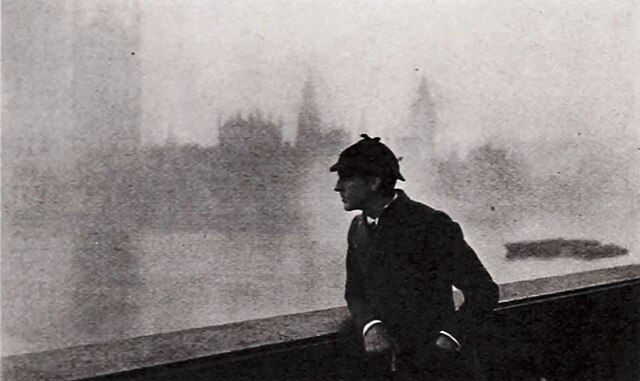On December 1893, Arthur Conan Doyle killed the most famous detective in the world.
Sherlock Holmes died at the edge of a waterfall in Switzerland, locked in a death-grapple with Professor Moriarty. Readers were stunned. Some wept. Others wore black armbands in mourning. One newspaper is said to have declared: “We mourn Sherlock Holmes as we would a real person.”
But Holmes wasn’t real. Right?
The Murder of a Fictional Man
Here’s the thing. Doyle didn’t hate Holmes. Not exactly. But he resented him.
Holmes had made Doyle rich, yes. Famous, absolutely. But also stuck. The character overshadowed everything else he tried to write. Doyle wanted to be remembered as a serious historical novelist, not the guy who wrote detective stories for magazines.
So he pushed Holmes off a cliff. Literally. He wrote “The Final Problem” and sent Holmes to his death.
And he thought that would be that.
Fans Lost Their Minds
They weren’t ready to let go. Letters poured in. Thousands. Some addressed to Doyle, others to Holmes himself, begging him to return. One woman even started her letter, “You brute.”
Publishers panicked. Magazine sales dipped. Doyle held firm for a while. He even got some satisfaction out of it. But the pressure didn’t stop. It grew louder, more relentless, and more profitable.
Then Came the Resurrection
In 1901, Doyle published The Hound of the Baskervilles. It was a prequel, technically. Holmes was still dead. But the public smelled a comeback.
By 1903, Doyle gave in. The Adventure of the Empty House brought Holmes back from the grave. Doyle explained that Holmes had faked his death to outwit Moriarty’s henchmen. Some fans bought it. Others didn’t care. Sherlock Holmes was alive again. That was enough.
Why Did Doyle Do It?
The easy answer is money. And sure, Doyle was offered an absurd amount for new Holmes stories. But it wasn’t just that.
He’d tried to live without Holmes. He wrote historical novels, war commentaries, plays. Some were decent. None were Holmes.
People didn’t want Doyle. They wanted the detective with the pipe, the violin, and the cold logic.
Eventually, Doyle realized something every creator fears: your character might be smarter, stronger, and more beloved than you.
Holmes Outsmarted His Own Creator
After his return, Holmes stayed. Doyle kept writing him until 1927. Even when he felt tired of the stories. Even when the formula felt stale.
But something shifted. Later Holmes stories had more introspection. A little more weariness. Less sparkle, more soul. Maybe Doyle had stopped fighting Holmes. Maybe he’d made peace with the character who made him immortal.
A Fictional Ghost Who Refuses to Die
Today, Holmes is more alive than ever. He’s been played by everyone from Basil Rathbone to Benedict Cumberbatch. He’s been reimagined, modernized, parodied, adapted for radio, TV, film, and comics.
And still, somehow, he remains Holmes.
So why did Doyle have to bring him back? Because Sherlock Holmes wasn’t just Doyle’s creation anymore. He belonged to the readers. He lived in their minds. And no author, not even the one who wrote the words, could kill him for good.
Sources:
1. Arthur Conan Doyle, The Final Problem (1893)
2. Arthur Conan Doyle, The Adventure of the Empty House (1903)
3. Lycett, Andrew. The Man Who Created Sherlock Holmes: The Life and Times of Sir Arthur Conan Doyle

